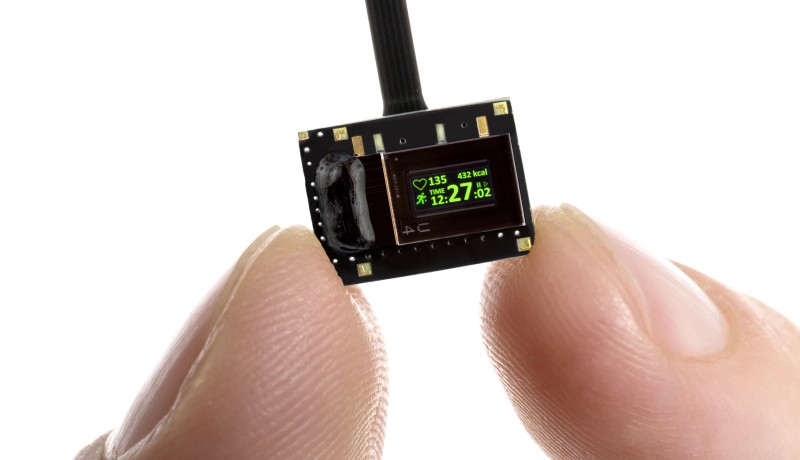Energy-saving data glasses
December 05, 2016
on
on

Data glasses mirror information to the eye without interfering with the wearer‘s vision. However, the battery runs down quickly, because the electronics consume a great amount of electricity while playing back the images.
Engineers from the Fraunhofer Institute for Organic Electronics, Electron Beam and Plasma Technology FEP in Dresden have developed a particularly energy-saving display that is also very bright. The scientists have many years of experience in the design and manufacture of displays with organic light emitting diodes (OLED). These are based on electrically conducting organic semiconductors that emit very bright light while energized. The OLEDs are applied to a silicon semiconductor which controls the individual pixels. The FEP has integrated a camera function into the chip. As a result, the OLED microdisplays not only emit light, but also perceive the surroundings.
There is also a small light-sensitive photodiode located in each pixel. The camera function, for example, is important in order to determine the direction in which the wearer looks. However, these displays have the same problem as all other displays of data glasses – high energy consumption.
Project manager Philipp Wartenberg and his colleagues at the FEP have found a way to reduce the large data stream. "We now control the chip so that the entire video image is not constantly renewed, rather only that part of the display in which something changes." For example, if an actor runs through a room in a movie, only his position changes, not the background. In applications such as a navigation system for cyclists, in which only arrows or metre information is displayed, it is unnecessary in any case to constantly renew the whole picture, says Wartenberg. "To put it simply, we have now adapted the circuit so that it only lets through that portion of the data stream which changes."
Source: Fraunhofer Research News.
Photo credit: Fraunhofer FEP.
Engineers from the Fraunhofer Institute for Organic Electronics, Electron Beam and Plasma Technology FEP in Dresden have developed a particularly energy-saving display that is also very bright. The scientists have many years of experience in the design and manufacture of displays with organic light emitting diodes (OLED). These are based on electrically conducting organic semiconductors that emit very bright light while energized. The OLEDs are applied to a silicon semiconductor which controls the individual pixels. The FEP has integrated a camera function into the chip. As a result, the OLED microdisplays not only emit light, but also perceive the surroundings.
There is also a small light-sensitive photodiode located in each pixel. The camera function, for example, is important in order to determine the direction in which the wearer looks. However, these displays have the same problem as all other displays of data glasses – high energy consumption.
Project manager Philipp Wartenberg and his colleagues at the FEP have found a way to reduce the large data stream. "We now control the chip so that the entire video image is not constantly renewed, rather only that part of the display in which something changes." For example, if an actor runs through a room in a movie, only his position changes, not the background. In applications such as a navigation system for cyclists, in which only arrows or metre information is displayed, it is unnecessary in any case to constantly renew the whole picture, says Wartenberg. "To put it simply, we have now adapted the circuit so that it only lets through that portion of the data stream which changes."
Source: Fraunhofer Research News.
Photo credit: Fraunhofer FEP.
Read full article
Hide full article


Discussion (0 comments)